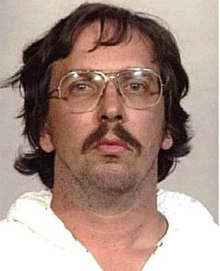When a Serial Killer Understands Forensics
- crimehivenow
- May 7, 2023
- 4 min read

After all the teeth have been meticulously removed, when the legs for that head are lying miles away, and when the torso and arms are floating down a river somewhere, a head in a can would typically be fairly valuable to the police. When all of that occurs, as it did in this case, it may take 24 years before the puzzle pieces are fitted together, and even then, the culprit has to provide assistance.

Heidi Balch
Heidi Balch was the victim of this person's first murder, which he committed on February 20, 1989. She was a prostitute in the Manhattan neighborhood of New York City when she was assassinated at the age of 25. As you know, her head was eventually discovered inside a paint can on the golf course. Unsurprisingly, one of the officers who worked on the investigation commented, "It was startling." The policeman added that they never imagined making an arrest for the crime as the years went by.

Joel Rifkin was a troubled and sexually frustrated young man who may have killed up to 17 women, many of them young girls, and went to great lengths to avoid being caught; despite learning disabilities, he was certainly what detectives called "forensically aware" had he not told the police that he killed this girl and killed many others, he would still likely have been known to few friends as just an oddball who wasn't very charismatic when it came to the opposite sex
Regrettably, the police response isn't usually the most vigorous when one of the world's poorest and most vulnerable citizens is slain. Due to this, there is a hypothesis about persons who are "less dead," according to which they are less dead in death since they don't matter as much in life. To be fair to the authorities, Rifkin was also highly skilled at avoiding leaving any signs of his whereabouts. Still, he almost likely would not have gotten away with murdering 17 middle-class kids in New York.
Balch was killed by being beaten over the head and strangled. He cut off her fingertips with an X-acto knife and dumped her mutilated arms in the east river. His forensic awareness was also demonstrated by the removal of her teeth. Soon after, he killed Julie Blackbird, a long island prostitute, and dismembered her before tossing the pieces of her body into a canal while weighing them down with concrete.

He continued to murder in this manner, usually targeting drug addicts or prostitutes whose lives were, to put it mildly, precarious. Rifkin killed one addict, 28-year-old Lorraine Orvieto, before stuffing her into an oil barrel and dumping her in Coney Island Creek. She was found by a fisherman, but it's noteworthy that it took her family two months before they ever reported their daughter missing to the police. She appeared to be less dead to her family as well.
Lorraine Orvieto

Rifkin killed Tiffany Bresciani, a prostitute, by strangling her in June 1993. He then drove her body back to his mother's house where he would probably dismember her. He made a detour at a hardware store en route to get some essentials for serial killers, including rope and a tarp. Then, he made the rookie error of leaving her body in a wheelbarrow in the garage for three days in the summer heat, which, as you are all aware, will hasten the process of decomposition and produce quite the stench.
Tiffany Bresciani
Mr. Rifkin thought it was time to act when that foul smell began to permeate the neighborhood. He got in the car and began driving to a location that he knew would be a great place to dump a dead prostitute, but once again, he made the rookie error, especially for a man who had become an expert killer. He was driving a vehicle without a license plate, which for a serial murderer is equivalent to the foolishness of a politician speaking his thoughts.
Rifkin knew he couldn't stop since he had allowed the body to decompose and get smelly enough to be putrefactive when he was discovered by state troopers deborah spargarin and sean ruane and those blue and white started blinking. He didn't immediately pick up the pace, but he also didn't slow down. Rifkin and his often quiet passenger were caught in a high-speed chase that ended outside a courthouse, wrapped around a utility pole.
Before they could even evaluate the damage, the police arrived at the scene with rifles drawn and immediately noticed the odor of a dead body. When Rifkin was subsequently interrogated at the station, he eventually just told the police everything, including details they were unaware of. To help them locate the bodies or body parts, he even made maps. The head in the can on the golf course was named Susie; this was also her working name and the name she had given Rifkin. But, it wasn't until 2013 that she changed her name to Heidi Balch.

Rifkin met another murderer named Colin Ferguson in jail in 1994. Ferguson shot at a train in 1993 with the intention of killing white people. He fired 25 times, killing 6. They began debating who was the greater murderer close to the jail phones, and Rifkin undoubtedly won the argument because of his impeccable record of body disposal and 17 murders. Yet in the end, his issues with other inmates led to solitary incarceration. He is at the Clinton Correctional Facility right now. In 2197, he is scheduled to go before a parole board.




























































Comments